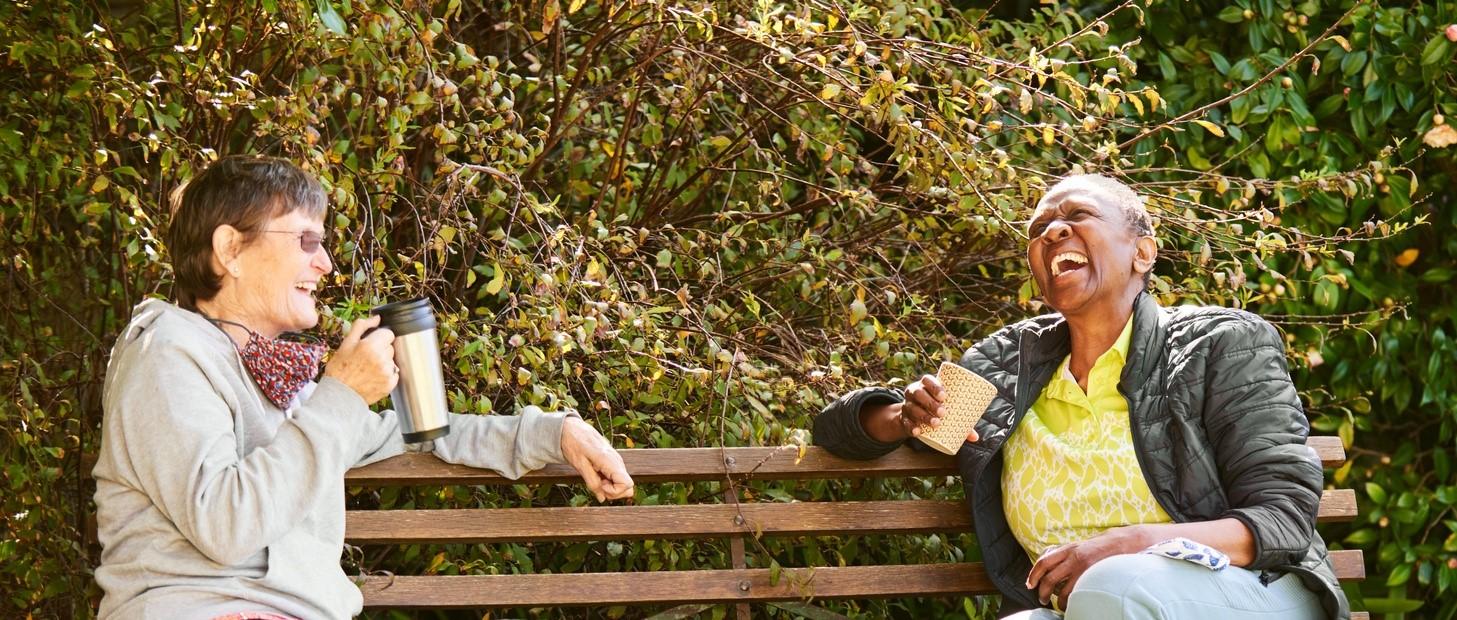
Lockdown easing: what is the plan and is it realistic?
Peer reviewed by Dr Sarah Jarvis MBE, FRCGPLast updated by Milly EvansLast updated 26 Feb 2021
Meets Patient’s editorial guidelines
- DownloadDownload
- Share
- Language
- Discussion
After a whole year in and out of lockdown and our lives turned upside down, it's a relief to many to hear the government announce its plans to ease COVID-19 restrictions over the next few months. But are they realistic?
In this article:
On 22nd February, the government announced its 4-step plan to ease lockdown in England. The full plans for Scotland will be announced at the beginning of March, and Wales and Northern Ireland will announce theirs in the coming weeks.
Continue reading below
The four tests
The government has said that at every stage the data will be reviewed before relaxing restrictions. This is to ensure that the measures aren't making the COVID-19 crisis worse, to prevent unsustainable pressure on the NHS and to ensure that prevention measures like vaccines, masks and social distancing are still working.
There will be gaps of at least five weeks between each stage of the plan: four weeks to assess the impact the new measures are having and a week to give notice of any changes which will or won't be going ahead.
As viruses aren't static and can evolve, it's important that the impact of lockdown measures be closely monitored, especially as new variants emerge which may behave differently to current strains of the virus.
For England to move on to the next stage of the plan, four tests will need to have been met:
The vaccination programme is continuing successfully and vaccines are still effective against the virus.
Evidence shows that vaccines are effective in reducing the number of people going into hospital and deaths from COVID-19.
Increasing infection rates don't risk a large or sudden increase in hospitalisations or unsustainable pressure on the NHS.
The risk posed by COVID-19 is not fundamentally changed by new variants of the virus.
The four stages out of lockdown
The full 'roadmap' for England leaving lockdown is available on the government website. There are four proposed stages, each of which would ease certain restrictions. Whilst dates have been attached to these stages, it's worth noting that each stage will rely on the four tests being met and that the dates aren't set in stone.
Step One: back to school and rule of six
From 8th March:
Everyone will still be encouraged to stay at home as much as possible.
Schools and colleges will reopen to all students for face-to-face teaching. Universities will reopen for practical courses.
Wraparound childcare (breakfast and after-school clubs, as well as school sport) will restart.
Outdoor exercise will still be allowed with your household or another person . In addition, you will also be allowed to meet one other person outside for social reasons (eg for a picnic or a cup of coffee) - you will need to remain socially distanced.
Apart from these 1-1 meetings, there must be no other mixing of households outdoors or indoors.
Funerals will be allowed with up to 30 people attending. Six people will be allowed at weddings.
From 29th March:
Up to six people or two households will be allowed to meet outdoors (socially distanced) but households are not allowed to mix indoors.
Outdoor parent and child groups will be allowed with up to 15 parents.
Outdoor sports and leisure facilities will start to reopen. Organised outdoor sports for adults as well as children will be allowed.
Everyone will still have to minimise travel as much as possible. Holidays will not be allowed.
Step Two: reopening retail and outdoor leisure
Step 2 will be at least five weeks after Step 1. These changes will come into effect no earlier than 12th April. In addition to all the changes in Step 1:
Indoor leisure, including gyms, will be allowed to reopen.
Outdoor attractions such as zoos and theme parks will reopen. Restaurants, pubs and cafés will be able to reopen to serve customers outdoors only.
All retail will be allowed to reopen. Hairdressers, barbers and beauty salons will be allowed to reopen.
Libraries and community centres will be allowed to reopen. All children's activities and indoor parent and child groups will be allowed to restart.
The number of people allowed at weddings will increase from six to fifteen.
People will be allowed to stay overnight away from home in self-contained accommodation with their household. This essentially means that holidays within the country will be allowed but only with members of your own household.
Travel will still need to be minimised and no international holidays will be allowed.
'Event pilots' will begin to help inform the further easing of restrictions and ensure that other events are safe to reopen. Depending on the results, other safeguards such as rapid access testing may be introduced when larger social and sporting events restart.
Step Three: larger gatherings and outdoor events
Step 3 will begin at least five weeks after Step 2, no earlier than 17 May. Again, all these changes will be in addition to those in Steps 1 and 2.
All but the most high-risk sectors will be able to reopen.
Indoor entertainment and attractions (such as cinemas) will reopen.
30 person limit outdoors with social distancing will still be in place. Up to six people or two households will be allowed to meet indoors.
Domestic overnight stays will be allowed and remaining accommodation will reopen.
International travel may be allowed but this is subject to review.
Some large events will be able to reopen with limits on how many people can attend.
Most significant life events such as weddings and funerals will be allowed to go ahead with up to 30 guests.
Remaining outdoor entertainment, including outdoor performances, will be able to begin.
Step Four: saying goodbye to social distancing
Step 4 will begin at least five weeks after Step 3, no earlier than 21st June.
There will be an end to social distancing and no limits on social contact.
Nightclubs will reopen.
Larger events, possibly with no limits, will restart.
There will be no legal limits on weddings or funerals.
Continue reading below
Is it realistic?
Given that lockdown restrictions have gone through a yo-yo effect over the last year, many are asking if the government's lockdown plans are realistic or whether they could lead to further restrictions in the future. So what do the experts think?
"The proposed roadmap seems reasonable. The most important aspect of this proposed plan is the five-week intervals between each step to assess the impact of each relaxation step on the virus spread," says Dr Julian Tang, Honorary Associate Professor and Clinical Virologist at the University of Leicester.
"Now that the elderly and vulnerable are mostly protected, we shouldn't see any of the previous dramatic increases in hospitalisation and deaths that prompted the previous two national lockdowns.
"What interests me most now, as a clinical virologist, is the possible gradual emergence of younger cases of COVID-19 in the as yet unvaccinated population, who may not need hospitalisation but who may still develop long COVID complications. This may shift the COVID-19 healthcare burden to outpatient settings like GPs and specialist 'chronic fatigue'-like hospital clinics. The extent of this burden will affect how we manage this virus in the longer term as the virus becomes more seasonal."
Whilst the plan covers a lot of different areas, there are still questions to be answered, says Professor Linda Bauld, Professor of Public Health at the University of Edinburgh. "This gradual easing is welcome but there are some important questions remaining on travel within the UK and internationally. If the government is concerned about variants and managing infection rates across the country, then what will the approach to domestic and international travel be?
"The UK is committed to an international response to vaccine rollout, but that will be slow in many parts of the world. Many have said that we are not safe until everyone is safe."
Back to school
The reopening of schools will be a key step in leaving lockdown. But unlike the rest of the UK which has chosen a phased return to schools, England is opening schools to all pupils on 8th March with the introduction of face masks and regular testing. Is this the right move?
"My personal view is that a more cautious approach with a phased return would be better," says Dr Michael Head, Senior Research Fellow in Global Health at the University of Southampton. "Children do desperately need to be back in school, but the trade-off is that there will an increase in the R number as a result.
"However, the flip side is that other indoor spaces are being kept closed. We know that indoor settings are where most transmission takes places, and so the key to keeping new daily cases as low as possible is to restrict mixing of households within those indoor environments. Therefore, on the whole, this roadmap looks broadly sensible. With the vaccine rollout going so well, this will eventually allow for a safer environment for staff and users when indoor workplaces like pubs, restaurants and office spaces do open again."
A managed approach to getting back to schools is key, agrees Professor Russell Viner, Professor of Adolescent Health at UCL: "The plans for school reopening whilst very largely maintaining other elements of lockdown appear to offer a pragmatic and plausible approach to balancing the risks to different parts of our population. It will however require very careful support for schools and families, scientifically appropriate use of rapid testing and an efficient test and trace system linking schools with local public health."
So whilst the government has announced its plans for getting England out of lockdown, they are by no means concrete. It's as important as ever to stay up to date on the latest guidance on the government website to keep yourself and your loved ones safe.
Patient picks for Pandemic articles

COVID-19
How to stay on top of unhealthy habits in lockdown
When the first lockdown was brought in, many of us vowed not to let it get the better of us. With more time to kill at home, we walked, signed up to online courses and learned how to crochet. A year on, however, it's getting increasingly difficult to eat well, stay active and engage in wholesome hobbies. So how can we avoid unhealthy habits as the pandemic continues?
by Lydia Smith

COVID-19
How to meet friends and family safely outdoors
Across the UK, lockdowns are easing and we're allowed to see friends and family outside (and indoors too if you live in England or Scotland). But that doesn't mean the risk of spreading COVID-19 has vanished; you still need to take precautions to keep yourself and your loved ones safe.
by Andrea Downey
Continue reading below
Article history
The information on this page is peer reviewed by qualified clinicians.
26 Feb 2021 | Latest version

Ask, share, connect.
Browse discussions, ask questions, and share experiences across hundreds of health topics.

Feeling unwell?
Assess your symptoms online for free